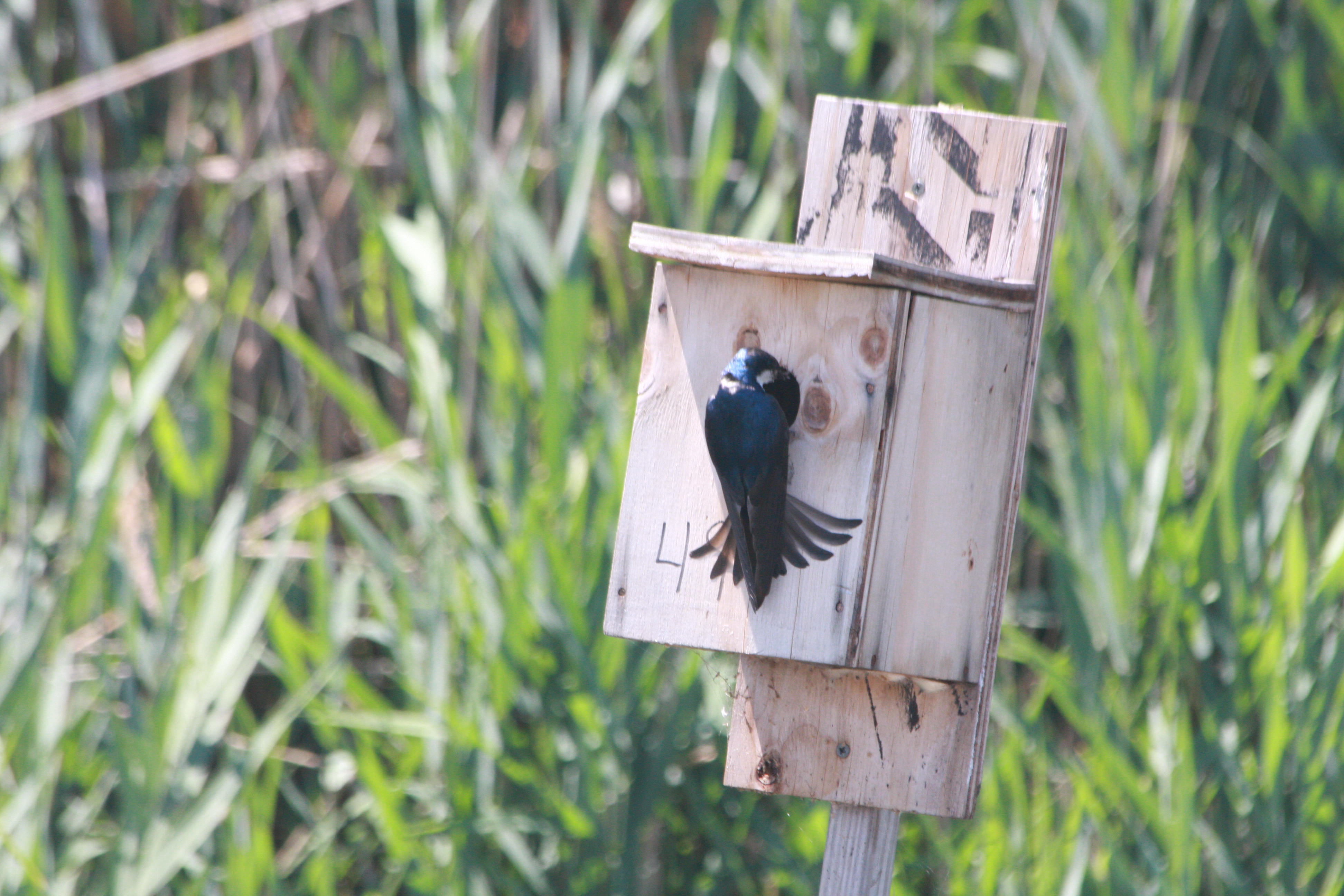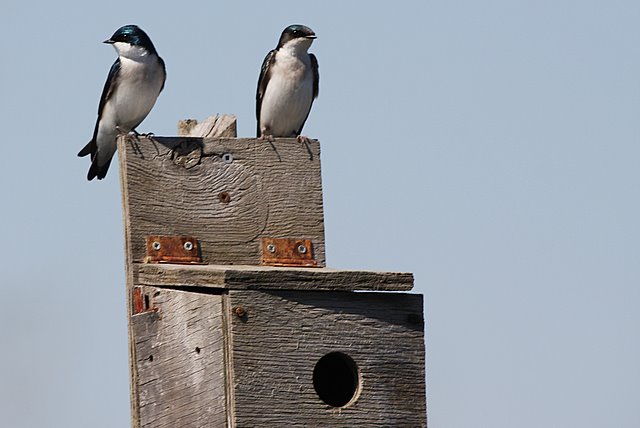This morning NJSEA staffers were busy at Harrier Meadow mounting and installing Tree Swallow nesting boxes for the beautiful, magnetic blue spring migrants who have started to appear in the Meadowlands. They have arrived a bit earlier than normal thanks to the warm weather. In addition to our photos from this morning, we’ve included file photos of Tree Swallows outside their new homes.
Tree Swallows migrate to the Meadowlands by the hundreds every spring and our naturalists are busy installing dozens of nesting boxes around the Meadowlands District in our marshes and the Hackensack River. The Tree Swallow is a secondary cavity nester, which means it must have the use of dead trees to nest in, and it must have a hole that has been excavated by a primary cavity nester. Loss of habitat and competition for nest sites from other bird species are part of the reason why we provide these vital nest boxes for these birds.
Here’s a complete primer on tree swallows:
The Tree Swallow (Tachycineta bicolor) is a small, beautiful bird about 5 ½ inches in length and has a metallic blue or blue-green upper part and a white under part. Tree Swallows are one of the first swallows to migrate back to this area for the spring nesting season. Hundreds of pairs can be found around lakeshores, streams, flooded Meadowlands and marshes.








